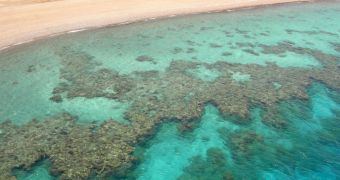Over the past few years, climate scientists have advanced the hypothesis stating the outbreaks in coral diseases were related to summer temperatures in the world's oceans, but that view was in a new study demonstrated to be too narrow.
An international team of scientists showed that these outbreaks can also be linked to temperature aberrations recorded during the winter, and not only the summer seasons.
The group includes experts from the US National Oceanic and Atmospheric Administration (NOAA), the Australian Research Council Center of Excellence for Coral Reef Studies, the James Cook University, and the Australian Institute of Marine Science.
Details of the work were published in the September 17 issue of the respected open-access scientific journal PLoS ONE, which is edited by the Public Library of Science.
The investigation was largely conducted on the Great Barrier Reef of Australia. The group was able to correlate the presence of mild water temperatures during the preceding winter period with a high number of coral disease outbreaks in this ecosystem.
Determining the amount of stress the corals were subjected to was also made possible, as the team used satellite measurements of water temperatures to derive so-called stress maps.
“Previous studies examined the relationship between warm conditions throughout the year and the likelihood of disease,” explains scientist Scott Heron, PhD.
“We considered the influence of summer and winter separately, taking into account both cold and warm stress, to find that winter temperatures are just as important as summer stress in determining the susceptibility of corals to disease outbreaks,” adds the expert.
He holds an appointment as a physical scientist at the NOAA Coral Reef Watch. The scientist explains that studying the reef is important because of the huge impacts this ecosystem has.
Around the globe, reefs play significant social, cultural, economic and ecological role for people and communities. The annual value of the services they provide is estimated to be about $375 billion.
“Satellite monitoring of sea surface temperature has been useful in predicting coral bleaching. Now we’ve used satellite measurements to find links between disease and temperature stress,” adds the NOAA Coral Reef Watch program coordinator, C. Mark Eakin, PhD.
“Our new product should allow us to predict the risk of potential disease outbreaks in Australia, providing reef managers with vital information and enabling rapid management response. We look forward to expanding it to other areas as well,” he concludes.

 14 DAY TRIAL //
14 DAY TRIAL //